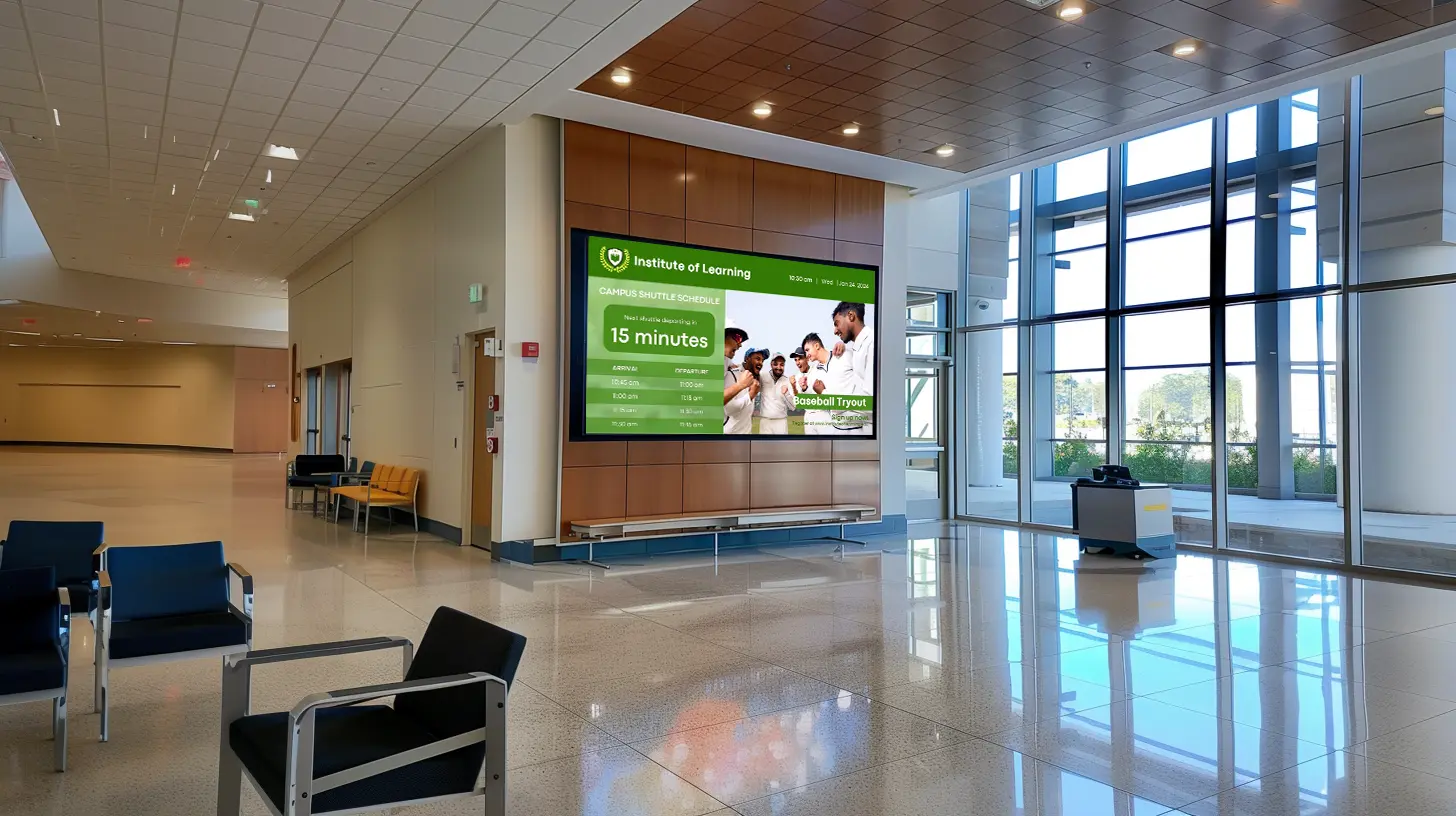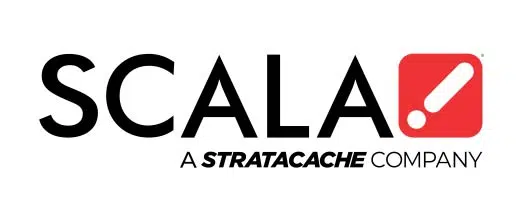The Scala Guide to Digital Signage for Universities
by Scala Team
The Scala Guide to Digital Signage for Universities
by Scala Team

The basics of digital signage for universities
The use of digital signage at universities has the potential to revolutionise on-campus communication. Whether it’s to share important updates, highlight events or celebrate achievements, digital signage plays a pivotal role in keeping students and faculty informed and engaged.

- robust hardware (screens and displays, media players) capable of withstanding varied campus environments including indoor and outdoor locations
- reliable content delivery systems that ensure messages are up-to-date, and
- efficient content management tools that allow for easy updates.
Together, these components form the backbone of a digital signage system that can meet the dynamic needs of university campuses, making information dissemination not just a necessity but an integral part of the campus experience.
Planning a university digital signage strategy
Setting out a clear plan is vital to ensure your university digital signage offers you a good return on investment. Here, we share some key steps in mapping out your strategy:
1. Identify your goals
What do you hope to achieve? Perhaps your aim is to boost student engagement, streamline campus communication, or enhance safety awareness. Understanding your goals is paramount.
2. Take stock of your communication needs
Assess the types of information that need to be shared regularly. This could range from event announcements to critical alerts. Identifying these needs helps tailor your digital signage content effectively.
3. Map out the prime locations for digital displays
Consider high-traffic areas where students and faculty congregate, such as libraries, cafeterias, and main hallways. Placing signage in these strategic spots ensures maximum visibility and impact.
4. Plan your content strategy
This involves deciding what types of content to display, determining the frequency of updates, and choosing who will be responsible for content creation and management. Effective content planning ensures that your digital signage remains relevant, engaging, and up-to-date, thereby maximising its utility on campus.
Types of digital signage solutions for universities
When it comes to enhancing campus communication and engagement through digital signage, universities have a variety of solutions at their disposal. Each option serves a unique purpose and can be deployed strategically across the campus to maximise impact. Here, we break down some of the most useful types of digital displays for university campuses.

Interactive kiosks
Interactive kiosks are a standout choice for universities, providing students and staff with on-demand access to digital wayfinding and campus maps, event schedules, and other vital information. These kiosks can be placed in high-traffic areas, such as entrances and student centres, offering a self-service option that enriches the campus experience.
Video walls
Video walls create visually striking displays that can captivate and inform. Positioned in central locations like libraries or main halls, they are ideal for showcasing student work, broadcasting live events and important updates, and highlighting university achievements on a grand scale.
Outdoor digital displays
Outdoor digital displays are essential for reaching those moving between buildings or entering the campus. They can be wall-mounted or free standing, and are designed to be durable and weather-proof, effectively promoting events, delivering critical alerts and updates and welcoming visitors.
Digital standees
Digital standees can be used to guide, inform, and advertise in lobbies, lounges, and high-traffic areas, and are especially useful outdoors for reaching people on-the-go. Interactive digital standees can also be used for wayfinding and to deliver campus information.
Large format displays
Large format digital displays are versatile tools for communication, ensuring messages are seen in lecture halls and sporting facilities and enhancing the visibility of important announcements and updates.
By choosing the right mix of digital signage solutions, universities can revolutionise how they communicate, creating a more informed and engaged campus community.
Content creation and management for university digital signage
Crafting and managing content for university digital signage doesn’t have to be a cumbersome task. The right content management tools can help universities streamline their digital signage and ensure messages are delivered effectively.
A robust, centralised content management tool can allow universities to:
- easily organise, manage, schedule, and publish varied content across multiple displays and locations campus-wide.
- simultaneously display content across all displays on campus
- achieve uniformity and coherence in messaging, regardless of the campus location
- publish different content on different displays tailored to specific audiences or locations.
Scala Content Manager is an excellent tool for digital signage content management at the scale needed for sprawling university campuses. It’s designed to make the process of content creation and scheduling straightforward, enabling staff to update and manage digital signage content with ease.
Measuring the impact of university digital signage
Measuring the success of digital signage is crucial for universities to ensure a maximum return on their investment. To measure the impact effectively, universities should focus on specific metrics that reflect engagement and information dissemination. Here are some ways to measure the impact of digital signage:
- track interaction rates with interactive kiosks, such as the number of times students access campus maps or event schedules
- surveys and feedback forms
- analyse data on the reach of emergency alerts to measure the system’s effectiveness in maintaining safety and awareness.
By keeping an eye on these metrics, universities can fine-tune their digital signage strategies to better serve their communities, ensuring that the content remains relevant, engaging, and impactful.
About the Author:
Scala digital signage experts share their experience and thoughts in our blog to provide practical tips and advice for real-world applications. Our team aims to offer interesting content through a variety of formats including long form articles, video logs, interviews and infographics.




